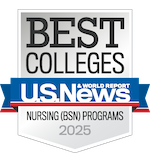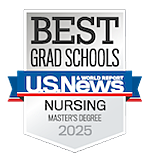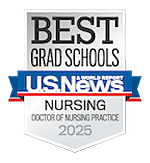UMSN Nursing Takes Leap into the Future with Virtual Reality

The landscape of nursing education is evolving, driven by the urgent need to prepare future health care professionals with the skills and confidence required to thrive in an increasingly complex medical environment. As such, the adoption of immersive virtual reality (VR) simulation headsets at the University of Michigan School of Nursing (UMSN) represents a monumental step forward.
In a Virtual World Not So Far Away
Imagine a classroom where students don VR headsets and are instantly transported to a fully interactive, virtual hospital. There, they can practice managing real-world scenarios — from handling emergencies to providing routine patient care — all within a safe, controlled environment. This innovative approach eliminates the risk of harm to actual patients, allowing students to make and learn from their mistakes without dire consequences.
In fact, VR can replace as much as 50% of the clinical hours required in nursing education without compromising learning outcomes.
“It’s a revolutionary way to teach our students to care, and to learn how to administer care under pressure,” says Michelle Aebersold, Ph.D., RN, CHSE, FSSH, FAAN, vice chair for Research, Department of Systems, Populations and Leadership, and clinical professor at UMSN.
Dr. Aebersold, along with Linda DiClemente, DNP, BA, RN, director of undergraduate program nursing specialties education, and clinical assistant professor at UMSN, are the leading forces behind this initiative. The two have worked tirelessly with the American Nurses Foundation to secure a portion of a generous $1.3 million grant for UMSN to revolutionize how undergraduate nursing students prepare for their critical roles post-graduation.
initiative. The two have worked tirelessly with the American Nurses Foundation to secure a portion of a generous $1.3 million grant for UMSN to revolutionize how undergraduate nursing students prepare for their critical roles post-graduation.
The grant funds UMSN and several other institutions within the BIG Ten Conference to incorporate VR simulations into their curricula, setting a precedent for the future of nursing education.
“Our role here is to not only implement and test this amazing technology with our nursing students but also to work with the Center for Academic Innovation at U-M to see how well the technology works and how well our students engage in the simulations,” says Dr. Aebersold.
Sitting in the Driver’s Seat of Virtual Reality
UMSN undergraduate nursing students can jump into this alternate nursing universe in their senior year through enrollment in Nursing Therapies 3. The course, which sees an annual enrollment of about 150 students, is structured to accommodate students across both the fall and winter semesters, with the class divided between these two academic terms.
When students don the VR headset, they enter a simulated medical setting for approximately 30 to 40 minutes while they navigate through a series of situations tailored to their skill level. Students have the liberty to make their own decisions and then the scenario will play out based on those decisions.
“[Virtual simulation headsets] have transformed how we learn,” says Emma Zielinski, a current UMSN student. “It’s like stepping into a real clinical setting with the freedom to make informed decisions. Even if we make the wrong one, we learn from it, and are more prepared when we eventually help real patients.”
Each student, like Emma, can progress at their own pace, focusing on areas where they need the most improvement. Instructors and professors, like Drs. Aebersold and DiClemente, can then track performance metrics to provide targeted feedback and additional practice opportunities during nonjudgmental and constructive debriefing sessions.
“We never say, ‘Well, that was stupid,’ or ‘Well, why did you do that?’” says Dr. DiClemente. “It’s all about the students learning from their own simulation and simulations that their fellow students just went through.”
“We want them to feel validated when they ask questions because maybe 10 of their peers experienced the same thing or did the same thing,” she adds.
Perhaps the most important part of the simulation, Dr. DiClemente explains, is prioritizing care. She highlights that the licensure exam ensures students are equipped to prioritize care effectively and safely. Dr. DiClemente notes that handling multiple patients requires knowing which tasks to address first, a skill that these simulations provide.
“We’re simply helping our students be successful in their first jobs, and we’re developing our reputation as an institution that graduates practice-ready nurses.”





